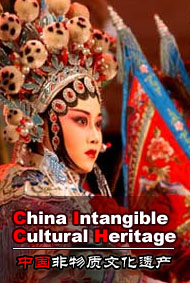
| Heritage Home | ||
| Literature | ||
| Music | ||
| Dance | ||
| Drama | ||
| Quyi | ||
| Acrobatics/Sports | ||
| Fine Arts | ||
| Crafts | ||
| TCM | ||
| Custom | ||
|
|
|
Xinjiang Uyghur Muqam
The Xinjiang Uyghur Muqam has developed four main regional styles, namely the Twelve Muqam, Turpan Muqam , Hami Muqam and Dolan Muqam, 1 Xinjiang Uyghur MuqamoTwelve Muqam Declarer: Xinjiang Uygur Autonmous Region Twelve Muqam is known as the "mother of Uygur music." Legend has it in the mid-16th century, aided by other musicians, the imperial concubine Amannisahan of the Yarkant Kingdom, who was also an esteemed poetess and musician, devoted all her efforts to collecting and compiling Muqam music, which was then scattered across areas populated by Uygur. She finally worked out 12 grand, yet light and entertaining compositions that are now known as the Twelve Muqam. The Twelve Muqam consist of sung poetry, stories, dance tunes and instrumental sections. Some of the lyrics of the Muqam are drawn from the great Central Asian Chagatay poets. After the founding of new China (1949), the local government of the Xinjiang Uygur Autonomous Region made every effort possible to preserve the Twelve Muqam. The whole set of the Twelve Muqam consists of 360 different melodies and takes over 24 hours to play in full. Declarer: Shanshan County, Xinjiang Uygur Autonmous Region Each of the Turpan Muqam generally corresponds to one mode, and each is about thirty minutes in length. Although no information on its historical transmission is currently available, musically there is much to link the Turpan Muqam to the chong n?ghm? of the Twelve Muqam. While the section names differ, there is correspondence in overall structure, rhythmic cycles and melodic material. The preferred instrument for the Turpan Muqam is the satar bowed lute, plus t?mbür, dutar, chang and dap frame drum accompanying voices. 3 Xinjiang Uyghur Muqam oHami Muqam Declarer: Hami Region, Xinjiang Uygur Autonmous Region Hami Muqam is a kind of large-scaleUyghur musical performance, including 12 sets of music and 258 songs. During the development process Hami Muqam absorbed many musical elements from China's central plains, central Asia and west Asia in the aspects of lyrics, style and structure. 4 Xinjiang Uyghur Muqam o Daolang Muqam Declarer: Maigaiti County Xinjiang Uygur Autonmous Region Daolang people live around the Great Takelamagan Desert that is called the "Sea of Death" in Sinkiang. In ancient times, it was cut off from the outside world, and production lagged behind, so hunting played an important role. |